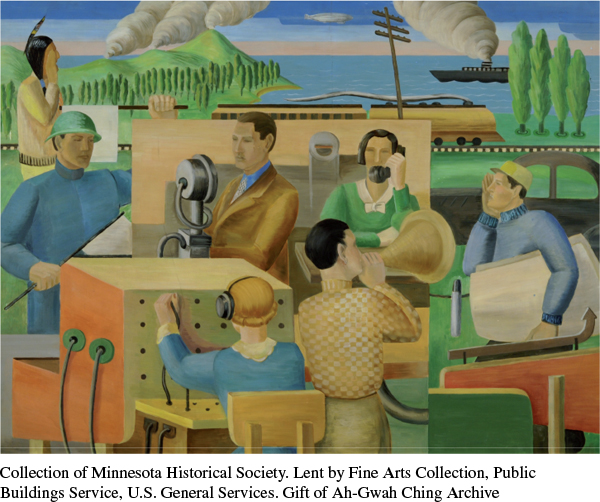Expanding Relief Measures
Even though the New Deal had helped millions of people, millions of others still felt left out, as the popularity of Townsend, Coughlin, and Long indicated. “We the people voted for you,” a Columbus, Ohio, worker wrote the president in disgust, “but it is a different story now. You have faded out on the masses of hungry, idle people. . . . The very rich is the only one who has benefited from your new deal.”
In 1935 the president seized the opportunity to win his way back into the hearts of impoverished “forgotten Americans.” Although Roosevelt favored a balanced budget, political necessity forced him to embark on deficit spending to expand the New Deal. Federal government expenditures would now exceed tax revenues, but New Dealers argued that these outlays would stimulate job creation and economic growth, which ultimately would replenish government coffers. Based on the highly successful but short-lived Civil Works Administration, the Works Progress Administration (WPA) provided jobs for the unemployed with a far larger budget, starting out with $5 billion. To ensure that the money would be spent, Roosevelt appointed Harry Hopkins to head the agency. Although critics condemned the WPA for employing people on unproductive “make-work” jobs—a criticism not entirely unfounded—overall the WPA did a great deal of good. The agency constructed or repaired more than 100,000 public buildings, 600 airports, 500,000 miles of roads, and 100,000 bridges. The WPA employed about 8.5 million workers during its eight years of operation.
The WPA also helped artists, writers, and musicians. Under its auspices, the Federal Writers Project, the Federal Art Project, the Federal Music Project, and the Federal Theater Project encouraged the production of cultural works and helped bring them to communities and audiences throughout the country. Writers Richard Wright, Ralph Ellison, Clifford Odets, Saul Bellow, John Cheever, Margaret Walker, and many others nourished both their works and their stomachs while employed by the WPA. Some painters, such as Jacob Lawrence, worked in the “easel division”; others created elaborate murals on the walls of post offices and other government buildings. Historians and folklorists researched and prepared city and state guides and interviewed black ex-slaves whose narratives of the system of bondage would otherwise have been lost.

In addition to the WPA, the National Youth Administration (NYA) employed millions of young people. Their work ranged from clerical assignments and repairing automobiles to building tuberculosis isolation units and renovating schools. Heading the NYA in Texas, the young Lyndon B. Johnson worked hard to expand educational and construction projects to unemployed whites and blacks. The Division of Negro Affairs, headed by the Florida educator Mary McLeod Bethune and the only minority group subsection in the NYA, ensured that African American youths would benefit from the programs sponsored by the agency.
Despite their many successes, these relief programs had a number of flaws. The WPA paid participants relatively low wages. The $660 in annual income earned by the average worker fell short of the $1,200 that a family needed to survive. In addition, the WPA limited participation to one family member. In most cases, this meant the male head of the household. As a result, women made up only about 14 percent of WPA workers, and even in the peak year of 1938, the WPA hired only 60 percent of eligible women. With the exception of the program for artists, most women hired by the WPA worked in lower-paying jobs than men.
Exploring American HistoriesPrinted Page 738
Exploring American Histories Value EditionPrinted Page 544
Chapter Timeline